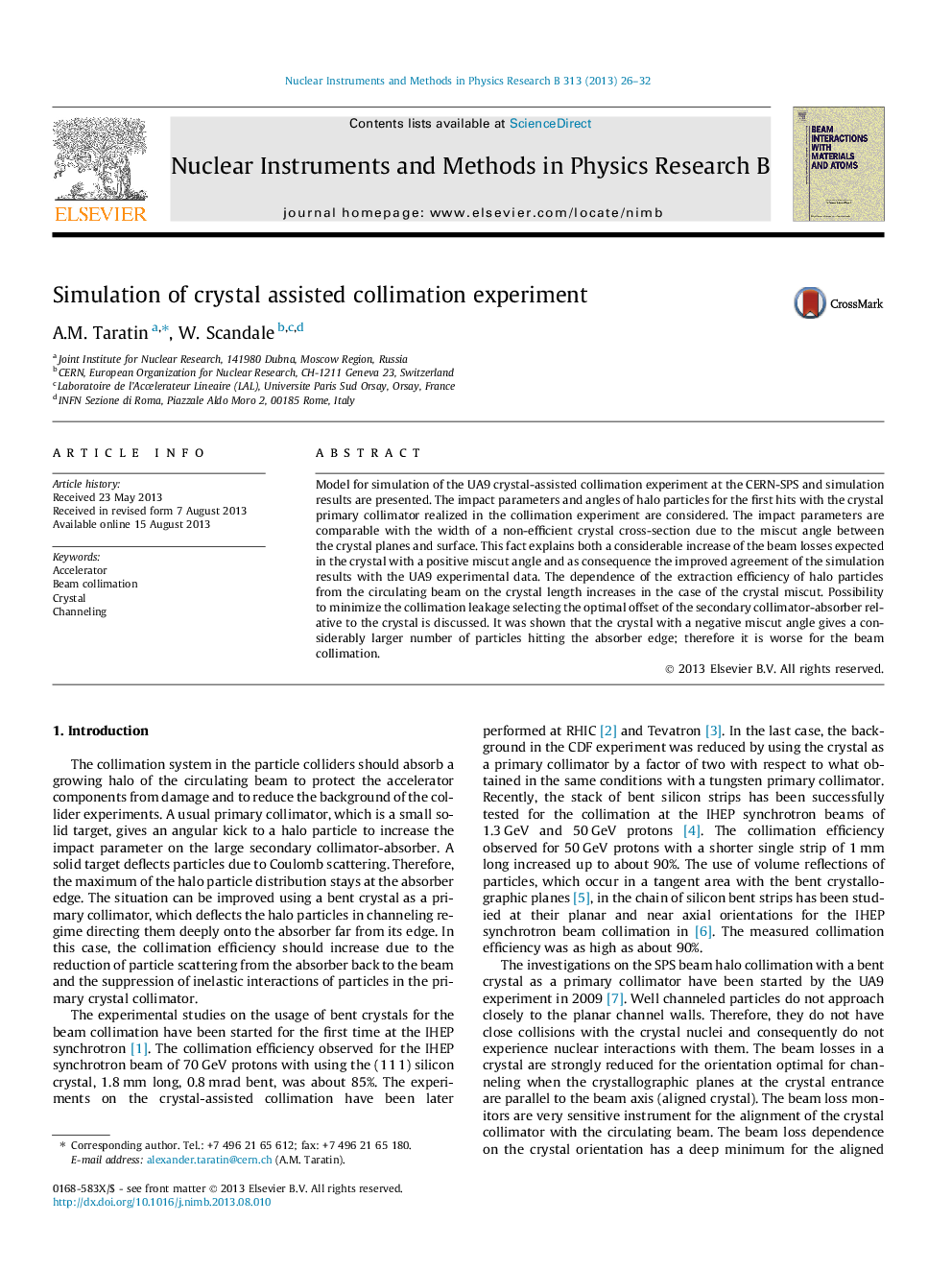| Article ID | Journal | Published Year | Pages | File Type |
|---|---|---|---|---|
| 1681230 | Nuclear Instruments and Methods in Physics Research Section B: Beam Interactions with Materials and Atoms | 2013 | 7 Pages |
Abstract
Model for simulation of the UA9 crystal-assisted collimation experiment at the CERN-SPS and simulation results are presented. The impact parameters and angles of halo particles for the first hits with the crystal primary collimator realized in the collimation experiment are considered. The impact parameters are comparable with the width of a non-efficient crystal cross-section due to the miscut angle between the crystal planes and surface. This fact explains both a considerable increase of the beam losses expected in the crystal with a positive miscut angle and as consequence the improved agreement of the simulation results with the UA9 experimental data. The dependence of the extraction efficiency of halo particles from the circulating beam on the crystal length increases in the case of the crystal miscut. Possibility to minimize the collimation leakage selecting the optimal offset of the secondary collimator-absorber relative to the crystal is discussed. It was shown that the crystal with a negative miscut angle gives a considerably larger number of particles hitting the absorber edge; therefore it is worse for the beam collimation.
Related Topics
Physical Sciences and Engineering
Materials Science
Surfaces, Coatings and Films
Authors
A.M. Taratin, W. Scandale,
